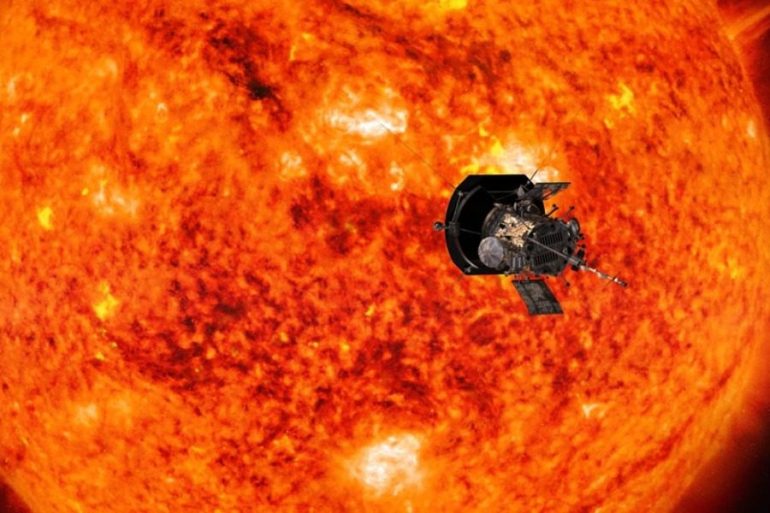The US space agency (NASA) Parker Solar Probe "touched" the Sun for the first time, as it spent five hours in the upper solar atmosphere, known as the crown. It is the first time that a human construct has crossed the outer limits of the Sun and made the first direct observations of phenomena (particles, magnetic forces, etc.) for which until now scientists could only make estimates.
The Parker is the alter ego of NASA's twin Voyager spacecraft. The latter are the human constructions that have traveled farther from the Sun (and the Earth) than any other spacecraft to date, leaving behind the solar "territory", ie the area of space to which the "breath" of the Sun reaches , the solar wind. In contrast, the Parker Solar Probe has come closer to the "heart" of our solar system than any other human machine.
The achievement, which was described as historic by NASA, occurred on April 28, 2021 and was now announced - it took a long time to obtain and thoroughly analyze the data - by scientists at a press conference at the American Geophysical Union (AGU) conference and with a related publication in the journal Physical Review Letters. "The event marks the achievement of the Parker's primary goal and a new era in understanding the physics of the crown," said lead researcher Professor Justin Casper of the University of Michigan.
"We have finally arrived, humanity has touched the Sun"
"It simply came to our notice then. Mankind has touched the Sun. Just as the landing on the Moon allowed scientists to understand how it formed, so touching the Sun is a giant step for humanity, which will help us discover critical information about the star closest to us and its influence on the solar system. "said Dr. Nikola Fox, director of NASA's Department of Solar Physics.
The spacecraft was launched in 2018 with the aim of studying the Sun at a closer distance than any other spacecraft in the past, something it has achieved after a series of increasingly close transits (it will do a total of 24). Its entrance to the crown, beyond the so-called "Alfven limit", at an altitude of about 13 million kilometers above the visible surface of the Sun (the photosphere), was achieved during its eighth close passage through our star. According to the APE-MPE, the cost of 1,5 billion dollars Parker, which among other things is the fastest object that humans have built, as it moves at a speed of over 500.000 kilometers per hour, has already made several important discoveries.
The mystery with the crown of the Sun.
The crown hides a mystery that requires explanation: While in the lower photosphere, which is closer to the "heart" of the Sun, the temperature reaches about 6.000 degrees Celsius, in its atmosphere (crown), which is higher, the temperature can reach a few million degrees Celsius. Also, inside the crown, the outflow of charged solar particles (electrons, protons and heavy ions) suddenly accelerates and turns into the ultrasonic solar "wind", a process that is also not well understood to date.
The next step for the boat will be to go even deeper into the atmosphere of the Sun and stay there for a longer time. Finally, in 2025, Parker is scheduled to reach a distance of only 6,2 million kilometers from the photosphere itself. The information it will gather will help, among other things, to make a better prediction in the future of space weather and the magnetic "storms" caused by the Sun, which, unlike the Earth, has no solid surface at all.
